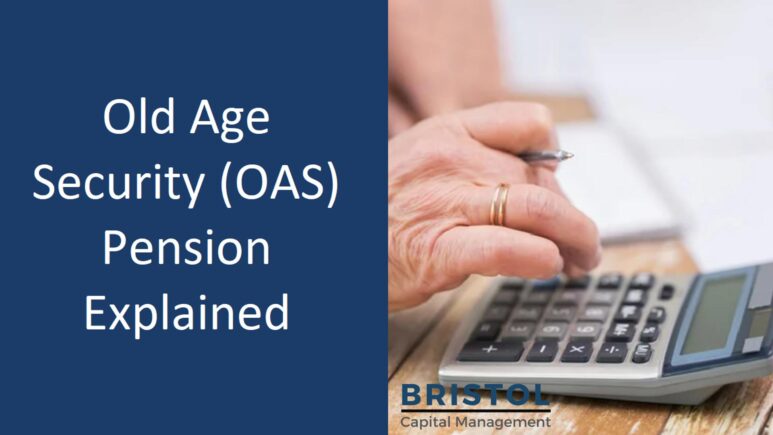1. Introduction
The Old Age Security, or OAS, is a monthly taxable pension benefit available to Canadians. Its eligibility criteria include solely Canadian citizenship or permanent residency, as well as a certain minimum amount of time or residency in Canada (exceptions apply). Unlike the CPP, the OAS requires no contributions or employment history; instead, the pension is generated from the Federal government revenues.
The pension is available starting the month after a senior turns 65 years. However, one can postpose the start date and in return the monthly payments will be larger (the increase is applicable for a delay up until one turn 70 years of age).
The enrolment in OAS is typically automatic. The CRA will send the individual a letter letting them know that they can start receiving the pension benefit. In some cases, if an individual does not receive such a letter, they might need to apply for the OAS at the CRA.
There exist some extra benefits. One of them is a one-time payment for individuals who are eligible to receive the OAS and were born on or before June 30, 1947. The Guaranteed Income Supplement (GIS) is available to individuals whose income is below a certain threshold. Some allowances as benefits for a spouse or a common-law partner are also available.
2. Who qualifies for OAS?
To qualify for the OAS, one should meet the following requirements:
- Be at least 65 years old
- Be a Canadian citizen or a legal resident
- Have resided for at least 10 years after turning 18 years of age
Residing in Canada for at least 10 years guarantees a partial amount of the pension. To have the full amount, one should have resided in Canada for at least 40 years.
If one is not currently residing in Canada, they can still qualify for the OAS. They have to meet the same requirements, but they have to have resided in Canada for at least 20 years (instead of only 10 years), and their status as a Canadian citizen or legal resident should be satisfied on the day before leaving Canada.
In special circumstances when an individual has worked abroad but for a Canadian employer, they might have their time in their employment considered as residence in Canada.
Even if individuals do not meet any of these requirements, they might still be able to apply for the OAS. For more information on these regards, please refer to the CRA website.
3. Amount of OAS
There is a set maximum amount of the benefit by the CRA. Currently, it is $648.67. The amount is indexed to the Consumer Price Index, and it is adjusted quarterly (every January, April, July, and October). There are three main cases in which an individual would receive a benefit different that this maximum – they lived in Canada for less than 40 years, they have high retirement income, or they defer the beginning of receiving the benefits.
The first scenario is if an individual has lived in Canada for fewer than 40 years. As already noted, to receive partial pension, one has to reside in Canada for at least 10 years prior to receiving the benefit, and to receive the full amount, they have to reside for at least 40 years. In the cases where one has resided in Canada between 10 and 40 years, the amount of the benefit will be determined by taking the ratio of the number of years lived in Canada to 40, and that would be multiplied by the maximum allowed benefit. For instance, an individual who has resided in Canada for 20 years and starts receiving the benefit now, their pension will be 20/40=50% of the maximum amount allowed, or 50% * $648.67 = $324.34.
In the case when an individual has a high income, they will be required to return part of the OAS benefit they have received. The threshold is determined by the CRA, and for 2020 it is $79,054 (after-tax). Any individual earning more than that threshold will have to return 15% of the portion above that amount. That is, an individual earning $79,154 in 2022 will be $100 above the threshold, and they will be required to return 15% * $100 = $15. That means that individuals earning above $128,149 will not earn the OAS benefit at all.
As already noted, an individual can delay the start time of receiving the pension. For any month they start later after turning 65 and before 70 years of age, the benefit amount will increase by 0.6%. This adjustment is similar to the one offered by the CPP. In order to determine whether one should decide to postpone receiving the benefits, one should examine their personal circumstances like their retirement income, health, and retirement plans. In general, individuals with high life expectancy will likely profit more from delaying the benefit. Another reason to delay would be if one has lived less than 40 years in Canada, and by delaying receiving the benefits, they will acquire additional residency years in the country, which will lead to receiving a higher portion of the maximum allowed benefit. Further, individuals with high income at and shortly after turning 65 years of age will likely 1) not need the pension immediately, and 2) if they start receiving it now, they may be required to return a considerable amount of it back, so these individuals might benefit more from delaying the start of their plan.
Author: Alexander Natchev
